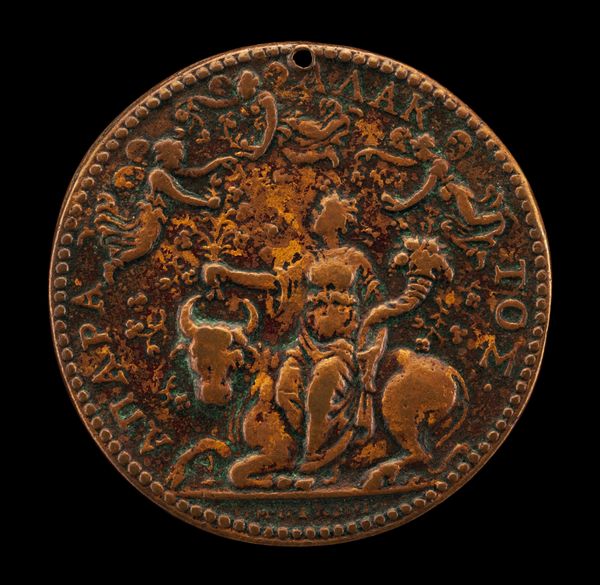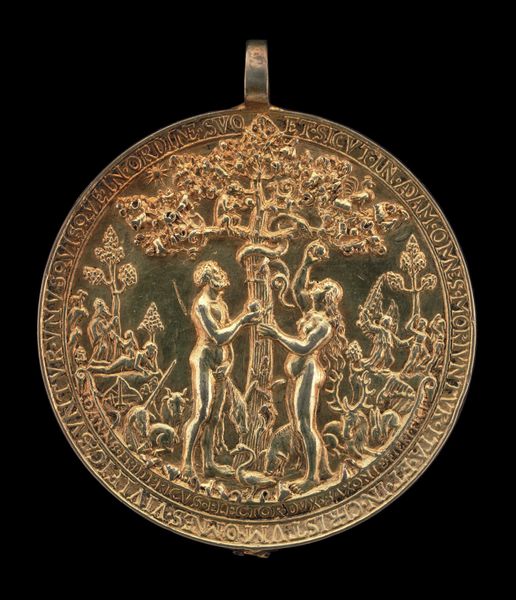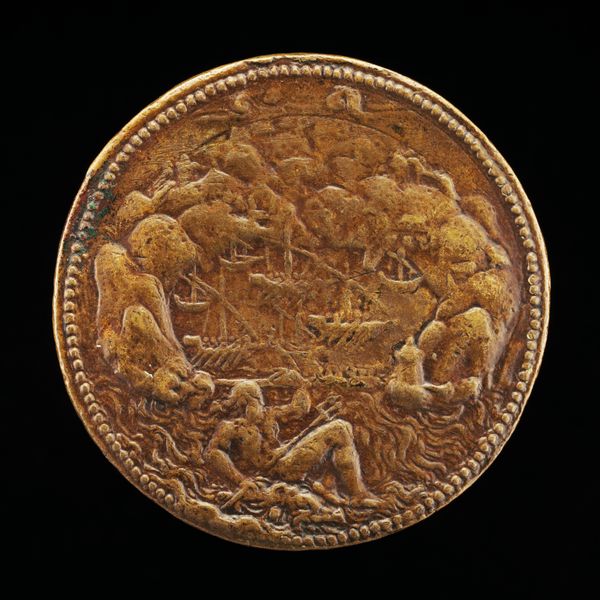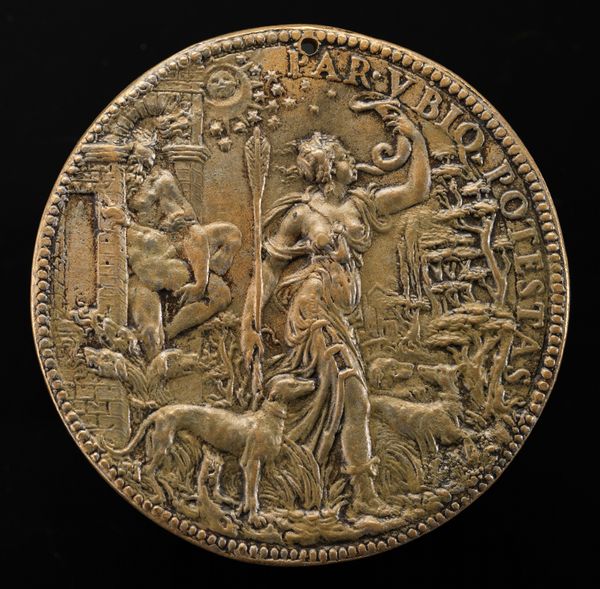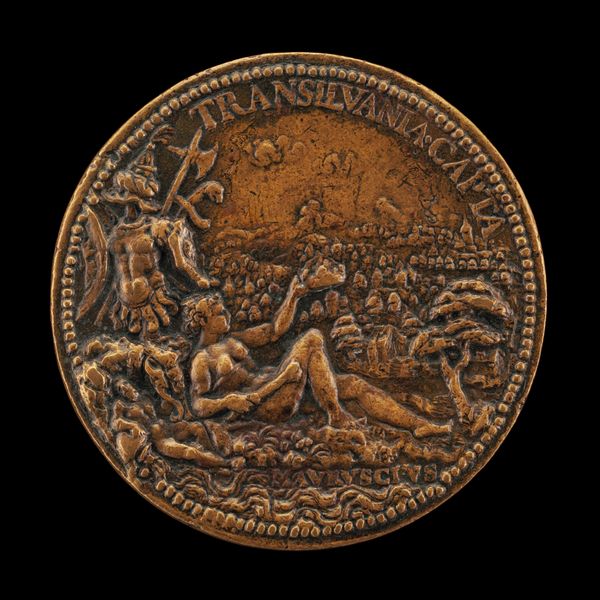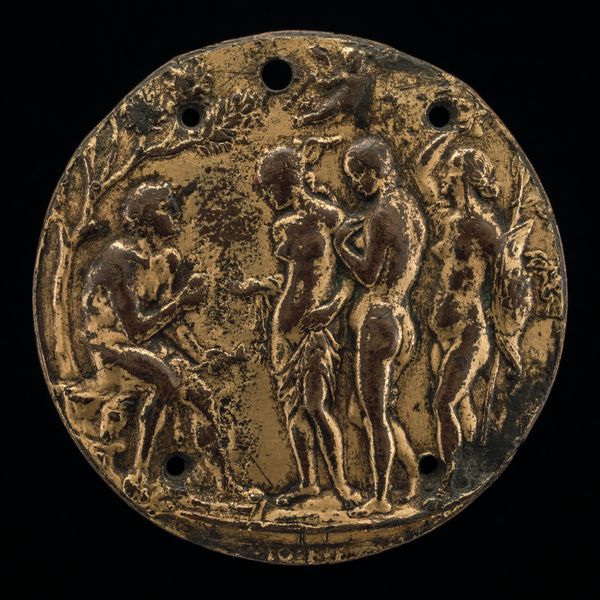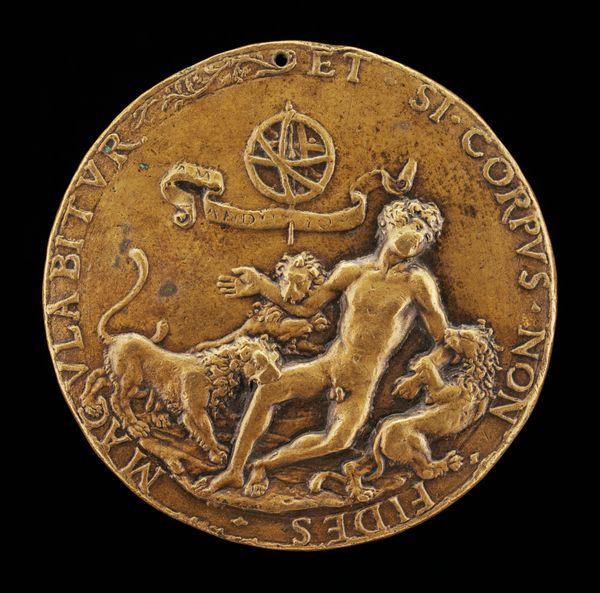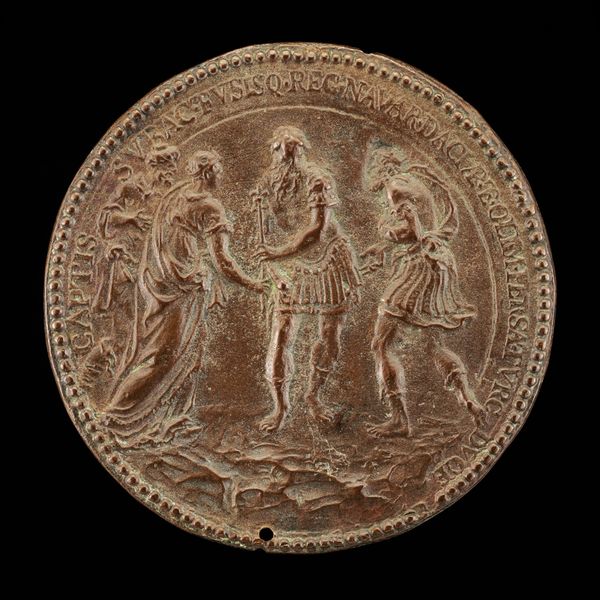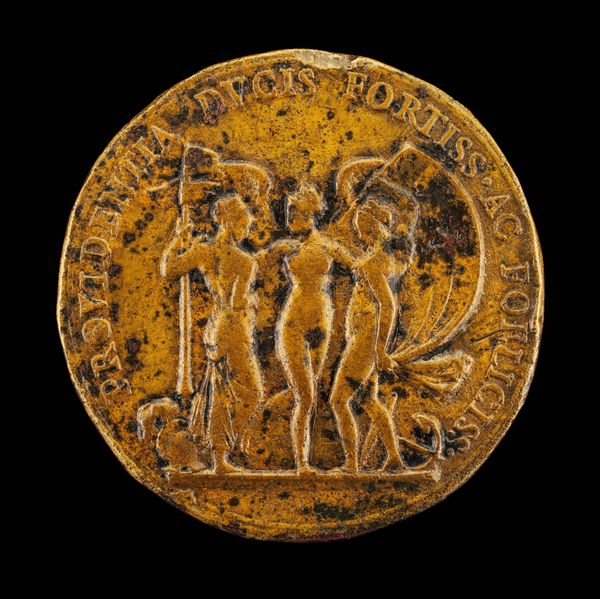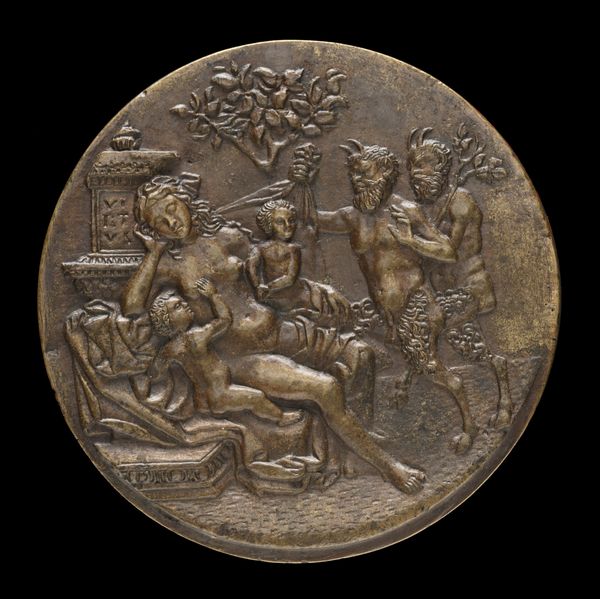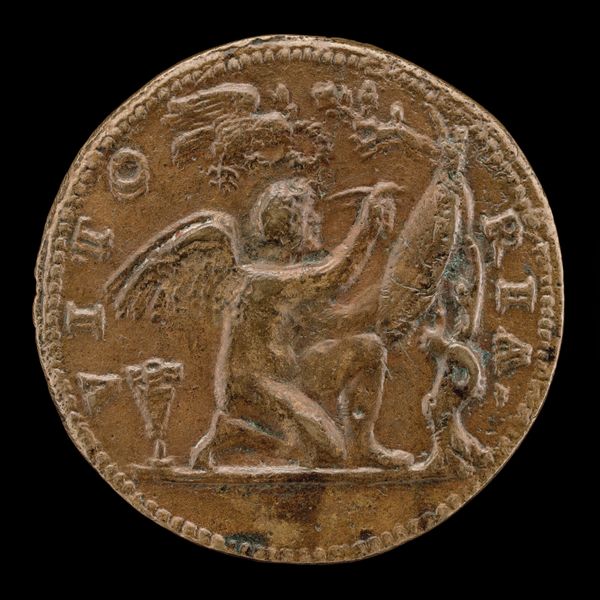![The Fall of Man [obverse] by Hans Reinhart the Elder](/_next/image?url=https%3A%2F%2Fd2w8kbdekdi1gv.cloudfront.net%2FeyJidWNrZXQiOiAiYXJ0ZXJhLWltYWdlcy1idWNrZXQiLCAia2V5IjogImFydHdvcmtzLzY0OTM4OTNkLTAzMzItNDIxNC04OGU3LTEzY2ExMzBkMDhiNy82NDkzODkzZC0wMzMyLTQyMTQtODhlNy0xM2NhMTMwZDA4YjdfZnVsbC5qcGciLCAiZWRpdHMiOiB7InJlc2l6ZSI6IHsid2lkdGgiOiAxOTIwLCAiaGVpZ2h0IjogMTkyMCwgImZpdCI6ICJpbnNpZGUifX19&w=3840&q=75)
relief, bronze, sculpture
#
portrait
#
allegory
#
stone
#
relief
#
bronze
#
sculptural image
#
figuration
#
sculpture
#
history-painting
#
italian-renaissance
Dimensions: overall (diameter): 6.6 cm (2 5/8 in.)
Copyright: National Gallery of Art: CC0 1.0
Editor: Here we have Hans Reinhart the Elder's bronze relief, *The Fall of Man,* dating sometime between 1535 and 1574. It feels incredibly intricate and dense. The composition crams so much detail into the circular frame, yet it's all quite legible. What strikes you when you look at this piece? Curator: The density you noticed isn’t accidental. Reinhart’s choice to fill every available space contributes to a powerful sense of drama. Look closely at the tree: laden with fruit, each piece meticulously rendered, symbolizing temptation. Beyond the immediate narrative of Adam and Eve, how do you interpret the presence of so many other figures packed into the background? Editor: Hmm, it almost feels like Reinhart is presenting the Fall as an event that reverberates through all of humanity. But, I wonder if packing it so tightly undercuts the focus on the central figures of Adam and Eve. Curator: An interesting point. I see those background figures as echoing Adam and Eve's story. Look at their gestures, their positions. Notice the contrast between activity and repose, innocence and corruption, which serve as warnings to those of us beholding the work centuries later. What do the animals suggest to you? Editor: Oh, the animals...there's a strange passivity about them. Especially the snake offering the fruit; its placement and its lack of active malevolence is very surprising to me. They don't appear as active participants, almost as if they, too, are subject to this primal event. Curator: Precisely! Reinhart employs established visual language, creating an emotional impact. In the context of the Italian Renaissance, religious and mythological narratives served as vehicles to impart cultural memory, a visual encoding of moral lessons that has been consistent for hundreds of years. Editor: I never thought about it that way. It’s amazing how the artist uses this crowded scene to expand on the biblical story beyond just one moment in time. Curator: Yes. By focusing on these complex visual motifs, the sculpture offers much to unpack about human nature itself.
Comments
No comments
Be the first to comment and join the conversation on the ultimate creative platform.
